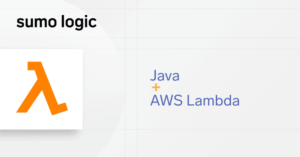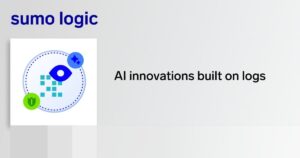Introducing the Sensu Integration Catalog — a marketplace-like UX for simplifying new user onboarding, and deploying production-ready monitoring in a matter of minutes. The Sensu Integration Catalog is also an open marketplace that new and existing users can contribute to by sharing Sensu configurations. Continue reading to learn more!
The modern era of cloud computing has democratized access to software products that provide “turn-key” experiences, enabling users to get up and running quickly, solving real work challenges in a matter of minutes. This ease of adoption has led more companies to consume more software solutions than ever before, which has created a new challenge: how do we integrate all of these products and services? This challenge is as true for sales teams who need integrated CRM solutions as it is for DevOps and SRE teams who need integrated observability solutions.
These days, almost every product we use to conduct business integrates with at least one other product or service. Some products only require a fixed number of integrations which can be configured during new user onboarding or from the product or service settings menu. For products that need to integrate with dozens or hundreds of third-party systems, the seemingly inevitable outcome is to provide a “marketplace-like” user experience for discovering and enabling integrations.
Here are just a few examples:
Even my text editor has a marketplace!
(Microsoft Visual Studio Marketplace)
Introducing the Sensu Integration Catalog
The Sensu Integration Catalog is a self-service marketplace for turn-key integration with the products and services that power your business. The Catalog is full of integrations for monitoring the systems you rely on (e.g. infrastructure and application monitoring), and integrations with your systems of record (e.g. chat, incident management, analytics).
For existing Sensu users this might not seem like news at all. After all, Sensu already provides integration with hundreds of third-party systems thanks to more than 500 community-developed Sensu Plugins from hundreds of contributors. Sensu is also compatible with thousands of plugins, libraries, and exporters from the Nagios, Telegraf, StatsD, and Prometheus ecosystems (as well as many many more). So why does Sensu need a marketplace? For a few reasons:
- Improved awareness/discovery of available integrations (in-app + docs + website).
- Provision of recommended/baseline configuration (i.e. how to use plugins) to make it easier to evaluate and deploy Sensu solutions.
Realizing the original vision for Sensu
Since forming Sensu Inc and breaking ground on the next-generation Sensu platform, which became Sensu Go, our goal was to take everything about the original Sensu and make it easier, make it portable (e.g. via reusable monitoring-as-code templates), and then make it autonomous (although that’s a blog post for another day). One of the major milestones we had in mind back in 2017 was to build an open marketplace for self-service monitoring. Here’s a slide in our original fundraising deck:
We’ve been building the platform to enable the “add to monitoring” button since 2017. At the time we had been inspired by the rising popularity of Slack and the Slack Button, which prompted this comparison.
We didn’t just want a marketplace of integrations that users could manually configure and enable — we wanted to build a platform that could fully automate the entire monitoring lifecycle from collection through processing. Fast forward to today’s launch of the Sensu Integration Catalog and we’re excited to be delivering on that original vision.
What sets Sensu’s marketplace implementation apart from alternatives is not just that it’s an open marketplace (see: https://github.com/sensu/catalog) — the solutions available in the Sensu Marketplace are truly turn-key push button integrations.
With the Sensu Integration Catalog, the install button doesn’t redirect you to documentation or other instructions to setup collection — it sets everything up for you and enables collection in real-time.
Under the covers, the integrations in the Sensu Integration Catalog are monitoring-as-code templates. A `sensu-resources.yaml` file containing Sensu API resources, and a `sensu-integration.yaml` manifest that configures user-inputs that should be overlaid on the Sensu resources (e.g. updating a default configuration parameter, etc).
Back in early 2020, we had been kicking around this idea of a public curation of Sensu solution templates, and those efforts helped refine our thinking about how to deliver on our original vision, which has resulted in the solution we’re launching today.
Use cases & next steps
The primary use case for the Sensu Integration Catalog is to simplify new user onboarding. That includes net new users of Sensu, as well as new teams inside of organizations that are already using Sensu. Getting started with Sensu needs to be easy enough that anyone who can install a monitoring agent can also roll out a comprehensive infrastructure monitoring solution in a matter of minutes. And that solution should integrate seamlessly with their existing tools and services. That onboarding experience should look like this:
-
Download and install Sensu (or get access to a new namespace in an existing Sensu deployment by your Sensu administrator)
-
Deploy Sensu agents to your multi-cloud infrastructure (e.g. on-prem servers and virtual machines, public cloud compute instances, Kubernetes pod sidecars and daemonsets)
-
Enable integrations with your existing systems of record using the Sensu Integration Catalog (e.g. Pagerduty for incidents, Slack or Microsoft Teams for basic alerts, Ansible Tower for self-healing, etc)
-
Enable monitors for the services you rely on to operate your business using the Sensu Integration Catalog, including: host monitoring (Linux, Windows, Unix, etc), cloud platforms (AWS, GCP, Azure, Kubernetes, etc), third-party services (e.g. NGINX), and more.
-
Profit
Many Sensu customers are large enterprises with dozens or hundreds of product teams who need access to monitoring and observability solutions. In these organizations, our customers have been asking for more tools to help them deliver “self-service monitoring” to their customers (other teams within the organization).
Sign up for our upcoming webinar!
If you want to learn how to set up production-ready monitoring in a matter of minutes with the Sensu Integration Catalog, sign up for our on-demand webinar. You will receive the video when it becomes available on April 28, 2022.
Want to try the Sensu Integration Catalog? Visit https://sensu.io/downloads to download Sensu Go version 6.7.0 and get started today!
Pay close attention to the Sensu blog in the coming weeks as we’ll have a lot more to say about the Sensu Integration Catalog, including:
-
Rolling your own Pingdom with the Sensu Integration Catalog (use case)
-
Engineering an open marketplace for Sensu: a technical deep-dive on the Sensu Integration Catalog design & architecture
-
How the Sensu Community can contribute integrations (with NEW SWAG!)
-
New integration announcements (many more coming soon!)
-
An update on Sensu Plus and the integration between Sensu Go and the Sumo Logic Observability Suite



